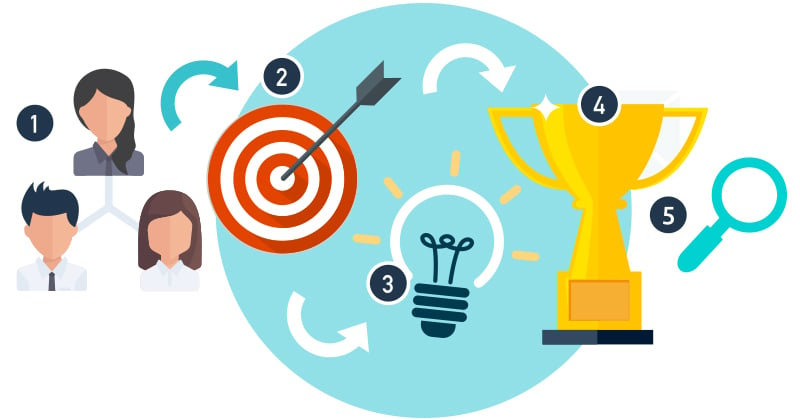
In today’s fast-paced world, your customers’ needs are constantly evolving.
To keep up, it’s essential for your organisation to take consistent, strategic steps to continue meeting their needs today, tomorrow and over the longer term. If not, you risk losing your clients to competitors who do.
Fortunately, with an approach called “design thinking”, you can take your service delivery to the next level, by ensuring that you’re always meeting changing demands and continuing to grow as an organisation.
Here’s what you need to know.
What is design thinking?
Design thinking involves undertaking an investigative, collaborative and consultative process to proactively gain a deeper understanding of customer behaviours and how they interact with your service.
What’s the purpose of design thinking?
The goal of design thinking is to provide managers and business owners with insights into any shortcomings in their current service offering by assessing how the organisation aligns with the expectations and demands of a target customer.
In the context of service delivery, design thinking is meant to encourage decision-makers to challenge preconceived assumptions about their customers, and instead encourage them to work with their customers to find alternative solutions that better meet their needs.
Which organisations use design thinking?
While any industry and business can apply design thinking, service providers such as government agencies, educational institutions and healthcare facilities often use design thinking to optimise their service delivery.
For example, instead of providing support services to citizens, patients and students by simply following “the way it’s always been done”, design thinking involves looking at the process from start to finish, observing bottlenecks and frustrations, and then developing practical solutions to make the process more streamlined. The most significant changes in service delivery, such as online appointment booking systems and mobile remote queueing, have come about by applying a design thinking approach.
The benefits of design thinking
As a service provider, making assumptions about your customers’ needs means you’re reacting to the customer of yesterday.
However, with design thinking, your organisation can overcome this.
That’s because design thinking is a consultative approach that involves your customers from the beginning, to make identifying service problems and their solutions much simpler. By collaborating with decision-makers, service staff and your customers themselves, you can:
- build better relationships
- enhance service efficiencies
- stand out in your industry
- streamline your processes, and
- improve the overall customer experience
All through accurate insights provided by your customers themselves.
How to apply the principles of design thinking
To optimise your service delivery, there are certain steps to take. These involve innovation, assessment, collaboration and action.
Let’s discuss these steps in more detail:
-
Innovation: let go of your ingrained ideas and past assumptions
As humans, whenever we’re faced with a problem, we typically go back to consider previous similar situations and build our solutions from there.
However, design thinking challenges you to leave your preconceived ideas behind and, instead, question the unique conditions of the current problem. This allows you to identify the root cause and come up with an innovative new solution.
Design thinking is all about going beyond what you already know to help meet your customers’ needs.
-
Assessment: view your service delivery through the eyes of your customers
Now your mind is free from assumptions, you have to reconnect with your customers and see from their eyes to better understand their needs and expectations.
Through consultation methods such as customer surveys and interviews, you can give them a voice and see your service from their point of view to help determine the real problem before getting to work on potential solutions.
-
Collaboration: Co-create with your customers
Once you’ve determined the root of the problem, it’s time to set about finding the solution.
Involving your customers in this process is pivotal to developing a meaningful solution that addresses their needs and improves their experience with your organisation. Not only that, but it also allows your customers to feel valued and heard, further strengthening your relationship with them.
-
Action: Achieve great results through rigorous testing
There’s no one way to redesign your service delivery. It takes repetitive testing and refining to find a unique solution that meets your customers’ needs.
The testing phase is where you will most likely encounter further issues that may redefine your problem or require alternative solutions to address. However, identifying these issues in testing will save you precious time and money, and allow you to perfect your solution before taking it public.
This is also a great opportunity to collect additional customer feedback on your new solution, helping to plug any gaps and create a more customer-centric experience.
Why design thinking is worth it
While design thinking may seem like a daunting approach at first, following these steps will help you break down the process and devise a solution that enhances your service delivery. Through design thinking, you can empower your organisation to build customers interactions that matter.
Remember - it’s always worth investing in an initiative that will make your service delivery more efficient and satisfying for customers, as well as more fulfilling for your staff and sustainable for your organisation.
The alternative is getting left behind by both your customers and your competitors.
Are you ready to use design thinking to improve your service delivery?
It can be the difference between mediocre and exceptional service delivery.
That’s where we can help you.
NEXA is an Australian company that delivers innovative solutions, such as Q-Flow, to empower both our clients and their employees by taking advantage of digital technology. With NEXA, you can support and enable your team, deliver excellent service levels and thrive in today’s evolving landscape.
We can help to evaluate your service design and guide you towards better service delivery through the power of design thinking.
Check out our solutions or talk to us today to find out how you can make your customer interactions matter.

